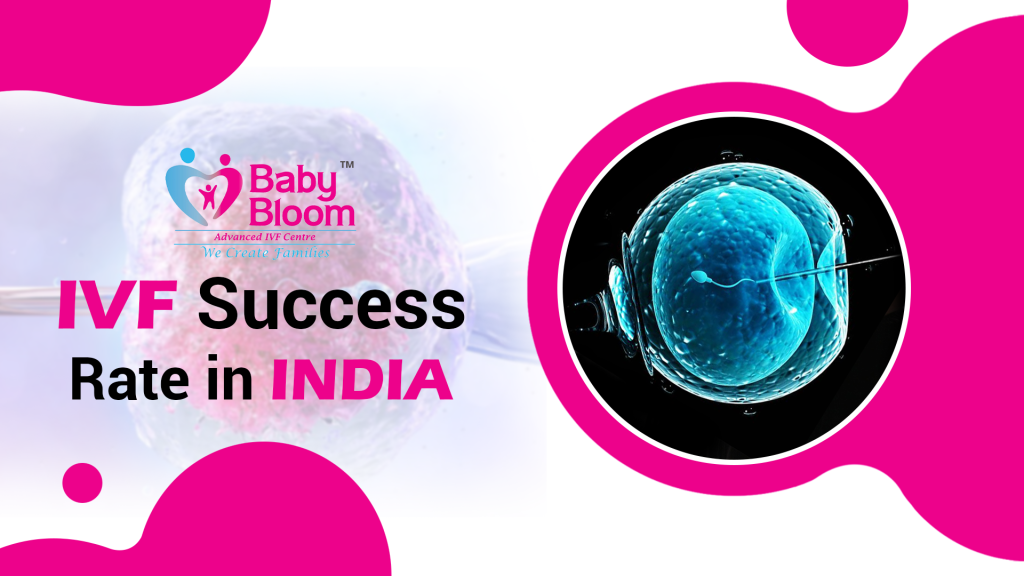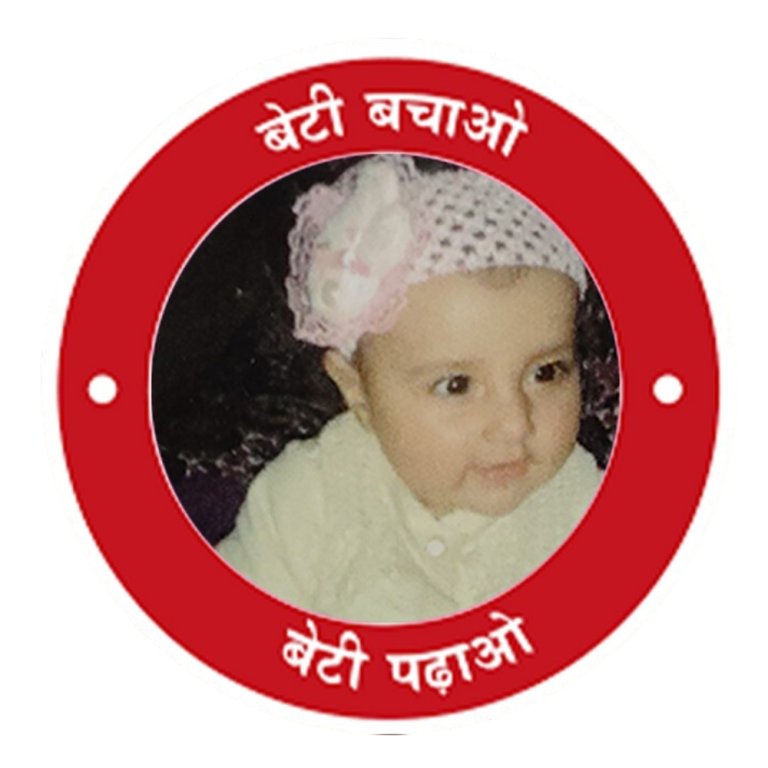What is the IVF success rate in India
The success rate of IVF in India is between 30-35 percent. IVF is an advanced and very popular artificial reproductive technology method that helps infertile couples to have a child. Currently, the success rate of IVF in India is between 35 to 40 percent. Whatever process takes place varies depending on various factors. Whose success depends on their process. Globally, the success rate among young women is estimated at 40%. With the advent of IVF technology, the success rate of IVF has seen a steady increase.

Dr. Pujil Gulati, IVF Specialist with over 9 years of experience in Assisted Reproductive Techniques BabyBloom IVF Gurgaon

IVF is also known as in vitro fertilization. This process is usually a fertilization treatment for couples, single parents, and same-sex couples who want to have a child. This process is usually 6-8 weeks long because first the person has to be fully prepared mentally and physically, after this he has to take medicines for the maturation of the eggs, due to which the eggs are released from the ovaries, then the eggs are is fertilized with sperm in the laboratory and implanted back into the womb So that when it further develops into an infant, it turns into a fetus.
What is The Success Rate of IVF on the First Try?
IVF, on the first try, offers a success rate of 40%, especially in women who’re below 35 years old. As women age, the chances begin to decline, which causes a downtrend in the success rate of IVF in India on the first try. In such instances, the women may have to go for multiple cycles of IVF to see the best results. In addition, several other factors also contribute to the success of an IVF procedure on the first try, such as the woman’s reproductive health, the quality of the woman’s oocytes and the man’s sperms, the woman’s hormonal health, etc.
The doctors take all measures to ensure the patients get successful results in their initial try. To ensure this, the specialists use several methods for treatment optimization. This involves understanding the cause of infertility and resolving it, and taking other necessary measures to ensure the outcomes are positive.
The patients should understand that the success of IVF in one cycle is highly subjective and should, therefore, shouldn’t feel dejected if the outcomes are negative. There are certain things a patient can do to ensure positive treatment outcomes, such as, choosing a highly experienced doctor and a reputed healthcare facility. They should see if the healthcare facility is equipped with the latest equipment and facilities to ensure the best treatment outcomes.

IVF SUCCESS RATES BY AGE
One of the key factors that significantly impacts the success rate of IVF treatment is the age of the woman undergoing the procedure. Age has long been recognized as an important aspect of pregnancy, whether it occurs naturally or through assisted reproductive technologies. This is also true for IVF, where younger women generally experience higher success rates compared to their older counterparts, who often face lower success rates. We will explore this further by examining different age categories.
IVF success rates under 35
Women under 35, particularly those in their 20s, tend to have higher success rates with IVF, as this is when they are most fertile. For women without any known fertility issues, the chance of achieving pregnancy is around 20%. However, those facing infertility challenges—such as a low egg count, genetic disorders, partner infertility, or being in a same-sex relationship—often turn to IVF. According to research from the CDC (Centers for Disease Control), the success rates for IVF vary based on age: Women under 35 generally have better success rates with IVF compared to those over 35. If a woman under 35 has never conceived, she has about a 32% chance of becoming pregnant through IVF. For those who have previously had a child, the success rate increases to 37%. Women in their 20s with two or more children have a 34% chance of a successful IVF cycle. While these percentages may seem modest, further studies indicate that women in their 20s have a 40-43% likelihood of embryo transfer leading to a successful pregnancy. IVF is known to be one of the more expensive infertility treatments, and many patients hope for success in just one cycle to minimize costs. According to CDC data, women under 35 have a 52% chance of achieving pregnancy after just one round of IVF.
IVF Success Rates in India with Donor Eggs
When a woman’s egg quality is poor, she may be recommended to use donor eggs to enhance the likelihood of a successful IVF procedure. Donor eggs are oocytes provided by fertile women for use by those who are unable to conceive. These eggs replace the woman’s own eggs during the IVF process, particularly when age has significantly affected her fertility. In India, the success rate of IVF using donor eggs can reach between 50% to 70% in a single attempt, and up to 90% after three attempts. This high success rate is largely due to the use of top-quality eggs, which leads to better embryo quality and, consequently, a greater chance of achieving a successful pregnancy. It’s important to note that the quality of the donor eggs is not the only factor; the laboratory where the treatment is conducted also plays a crucial role in determining IVF outcomes.
IVF SUCCESS RATE BY NUMBER OF EMBRYOS
There are many factors that influence the success rate of IVF (in-vitro fertilization) treatment, but one of the most crucial is the embryo—specifically, its number and quality. A significant portion of treatment failures can be attributed to the use of embryos with poor quality. Techniques like PGD (Pre-implantation Genetic Diagnosis) assist doctors in selecting the most viable embryos for IVF treatment. Some embryos may appear healthy on the outside but lack the necessary qualities for a successful pregnancy, while others that don’t look as promising externally might actually possess all the essential attributes for success. To identify, differentiate, and select the right embryo, doctors utilize the PGD technique.
Among the various factors that influence the success of IVF, the number and quality of embryos play a crucial role. One of the primary reasons for IVF failure is the quality of the embryos involved. For IVF to be successful, it is essential for the doctor to select only high-quality and viable embryos. A comprehensive evaluation of the embryos that appear viable on the surface is conducted to ensure they yield the best possible outcomes. Regarding the number of embryos used in the IVF process, it is generally recommended that doctors transfer only one healthy embryo into the woman’s womb, which they believe will lead to a positive result. While some emphasize the use of multiple embryos to increase the chances of a successful pregnancy, this approach is typically discouraged. Transferring multiple embryos can lead to a higher likelihood of multiple pregnancies, which introduces additional risks for both the mother and the babies. In terms of success rates, the outcomes are relatively similar in both scenarios.
Single vs. Multiple embryos
It is generally recommended that during IVF treatment, only a single embryo transfer is considered the healthiest option for pregnancy outcomes. The primary concern for a mother is the health of her baby. Transferring multiple embryos increases the likelihood of twins or multiple births, which also raises the associated risks for the babies. Additionally, the success rates for both single and multiple embryo transfers are quite comparable. Regardless of the number of embryos used in IVF, it is crucial to consider the potential risks involved. According to a study published in “Fertility Research and Practice,” the success rate for single embryo transfer was found to be 45%, while double embryo transfer had a success rate of 42%. This indicates that the success rates are relatively similar. Therefore, opting for a single embryo transfer is likely to be a safer and adequate choice for IVF treatment.
FAQ,s
What factors contribute to the highest success rates in IVF?
Various factors play a crucial role in the success of IVF, including the quality of the eggs and sperm, the woman’s age (ideally under 35), the complexity of the procedure, the health of the uterus, and maintaining a healthy lifestyle, among others.
How many cycles of IVF are typically needed?
There is no specific number of IVF cycles required to guarantee a successful pregnancy after IVF. Some women may achieve a positive result in their first cycle, while others might need several cycles before experiencing a successful outcome. It varies from one patient to another.
Do I need to undergo multiple IVF cycles to achieve a successful pregnancy?
If you don’t achieve a positive result from IVF on your first attempt, you can always consider trying another cycle. There isn’t a set limit on the number of cycles you can undergo.
Who is eligible for an IVF procedure?
Individuals or couples who are experiencing difficulties in conceiving naturally may be eligible for an IVF procedure. This includes those with conditions such as blocked fallopian tubes, endometriosis, male factor infertility, or unexplained infertility. Additionally, same-sex couples and single individuals looking to conceive may also qualify for IVF. It’s important to consult with a fertility specialist to determine the best course of action based on individual circumstances.
What if my IVF fails?
If your IVF procedure fails for some reason, you can always go for another cycle of the same procedure. Or, you can discuss other ART methods with your doctor and see if they will work for you.
Which is the most critical step in IVF?
Embryo transfer is the most crucial step in the IVF process. It involves placing the embryo or embryos into the woman’s uterus to facilitate implantation and the possibility of pregnancy.
What is more successful- IVF or IUI?
IVF generally has a higher success rate than IUI. However, the effectiveness of these two procedures can vary from patient to patient, depending on the unique circumstances of each case.
Welcome to BabyBloom IVF, where your journey to parenthood is nurtured with care, expertise, and the latest advancements in fertility treatment. Located in the heart of Gurgaon, Babybloom IVF is the Best IVF Centre in Gurgaon & leading fertility center dedicated to helping couples achieve their dreams of starting or growing their families.
Contact Us
Address No.1 I, block, 189, near Baani Square, South City II, Sector 50, (Gurgaon) Gurugram, Haryana 122018
Address No.2 Babybloom IVF, Nursing Home, Civil Rd, Company Bagh, Rohtak, Haryana 124001

Brought Happiness to the world
@BabyBloom IVF All Rights Reserved @2025


